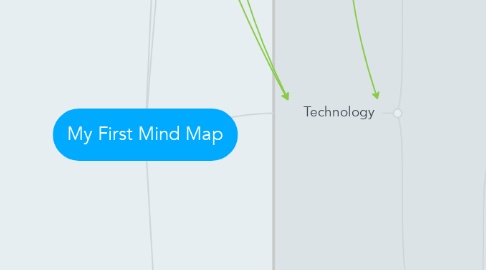
1. Vocabulary
1.1. Assignment
1.1.1. 1/3: Word Chart
1.1.1.1. This was the "Into" part of the lesson. Students basically completed a word chart by filling in the definitions and examples of the terms that needed to be defined.
1.1.2. 2/3: Flash Cards
1.1.2.1. This was the "Through" part of the lesson. Students had to transfer the terms with their respective definitions and examples onto individual flash cards.
1.1.2.2. Students were further assigned to study the cards.
1.1.3. 3/3: Vocab Knock-Out
1.1.3.1. This was the "Beyond" part of the lesson. Under time pressure and with bragging-rights on the the line, I observed if the students were able to recall the correct definitions without any assistance/advantages.
1.2. Feedback: My peers admired the thoroughness and were surprised with the execution and follow-through.
2. Journals
2.1. I observed...
2.1.1. Teacher did not utilize formal journals.
2.1.2. Teach utilized a regular informal structure for feedback.
2.1.2.1. 1) Student(s) ask(s) question(s).
2.1.2.2. 2) Teacher demos solution(s) with student(s).
2.1.2.2.1. Teacher will also address class for volunteer(s).
2.2. I want to...
2.2.1. I want to conduct formal investigations.
2.2.1.1. 1) Where did you struggle?
2.2.1.2. 2) Where are your strengths?
2.2.1.3. What lessons/assignments fell short?
2.2.2. I can possible do this using an online approach.
2.2.2.1. Option #1: Google Docs
2.2.2.2. Option #2: FB Page
2.2.2.3. Option #3: ???
3. Technology
3.1. I observed...
3.1.1. Teacher utilized a projector.
3.1.1.1. This allowed the instructor to gauge her students responses in real-time.
3.1.1.2. This might have resulted in the lack of need of journals.
3.1.2. Teacher allowed the use of...
3.1.2.1. Scientific vs. Graphing: It was important for the students to understand how to calculate the solutions by hand with as little tech input as possible.
3.1.2.1.1. Deters cheating.
3.1.2.2. Mobiles: Used to take snapshots of entire parts of lessons/demos that might have been missed due to lapse in attention or absences.
3.1.2.3. use of technology to add more accountability onto student's ability to obtain/acquire/retain lessons.
3.2. I used...
3.2.1. ... as a tutor...
3.2.1.1. Two tablets linked by TeamMeeting/TeamViewer.
3.2.1.1.1. Tablet #1: I use to demonstrate the solutions to the problems my student needs assistance with.
3.2.1.1.2. Tablet #2: Student can monitor the demonstration in real-time.
3.2.1.1.3. Allows me to conduct my sessions with reasonable consideration of personal-space without sacrificing the efficiency of the work-space.
3.2.2. ... as a teacher...
3.2.2.1. Multiple devices linked by TeamMeeting/TeamViewer.
3.2.2.1.1. This will allow students to better utilize the technology they already have on hand.
3.2.2.2. Use of the projector is another option in that is limits the need of available technology while still allowing me with the most face-time possible with my students.
3.2.2.2.1. Beneficial for low-income families.
3.2.2.3. Anything that allows me to better gauge my students progress/reactions in real-time.
4. Close Reading
4.1. Challenges
4.1.1. I am not accustom to creating literacy activities.
4.1.1.1. As a tutor, parents require students to obtain as much information from one source as possible.
4.1.1.2. Parents are not looking for a reading session that can be done at home for free.
4.1.1.3. Exceptions usually include those assigned by school instructors.
4.2. Product
4.2.1. Article on John Urschel. He is a profession football player and has a Master's degree in Math from Penn State.
4.2.1.1. Great idea to make math more approachable to those who are not mathletes.
4.2.2. There three vocabulary categories.
4.2.2.1. 1. Novice: general application
4.2.2.2. 2. Intermediate: more specific application
4.2.2.3. 3. Expert: almost esoteric in application
4.2.2.4. Theses were not necessarily determined by Tier.
4.2.3. There three question types.
4.2.3.1. 1. Within the Box: these pertained directly to what was presented in the article.
4.2.3.2. 2. Outside of the Box: these questions explored implied information and preexisting beliefs. Nothing directly discussed.
4.2.3.3. 3: Where'd the Box Go: These questions pertained to the article that Urschel wrote; however, that article was not presented in the assignment.
4.3. Feedback
4.3.1. I needed to keep all questions pertaining directly to the article in order to keep students engaged.
4.3.2. I can encourage reading the additional article or assign it for homework.

